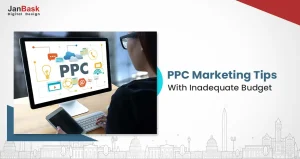
Ah, the age-old question that haunts every small business owner like a ghost in the accounting department: How much should I spend on marketing? Is it a drop in the bucket, a treasure chest, or somewhere in between?
Small businesses in the B2B services sector with annual revenue under $5 million typically spend between 7% and 8% of their revenue on marketing.

But here’s the kicker: it’s not just about the dollars—it’s about where those dollars go. Are you splurging on a website that’s smoother than a jazz singer? Or are you betting big on Google Ads that target people searching for “best [your product] near me” at 2 a.m.?
The truth is, there’s no one-size-fits-all answer. It’s like asking how much to spend on a wedding—it depends on whether you’re throwing a backyard barbecue or a royal ball. However, we’ve done the hard work of diving into the depths of the small business marketing budget landscape across all industries and businesses at every stage of growth. This means your job is to read this blog until the end to get answers to all your questions. You’ll have a clearer picture of how to make your marketing budget work harder than a barista on a Monday morning.
Before throwing money at Facebook ads like confetti at a parade, let’s talk budgets for small businesses. Because nothing kills a small business dream faster than blowing your ad spend on Tuesday and eating ramen for the rest of the month. Avoid this disaster by following some essential steps:
You can’t outrun the competition if you don’t know where they’re hiding. You wouldn’t attend a potluck without checking what everyone else brings, right? The same logic applies here. Take a peek at what your competitors are doing—what ads they’re running, where they’re spending, and how they’re talking to customers. Tools like Facebook’s Ad Library or SEMrush let you snoop without leaving fingerprints. How cool is that? Here are some tools you can rely on for comprehensive analyses and insights delivered in seconds:
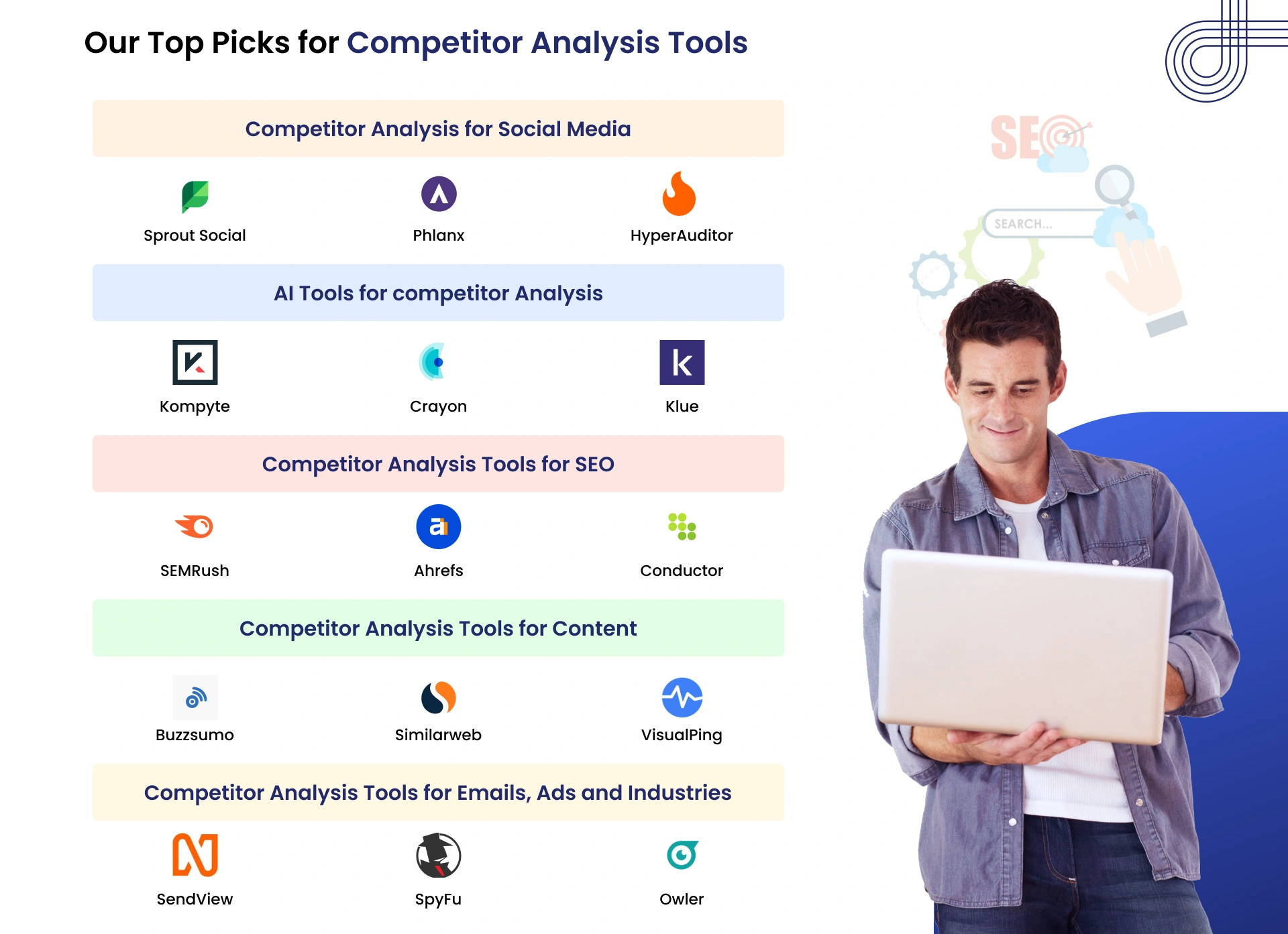
Pro Tip: If your competitors’ strategy works, borrow the good bits. If not, well… now you know what not to do.
But what about your industry trends? There are ways to stay updated, such as a quick Google search or signing up for a newsletter, without spending a lot of money. As for the average marketing budget by industry, we have a quick rundown for you:
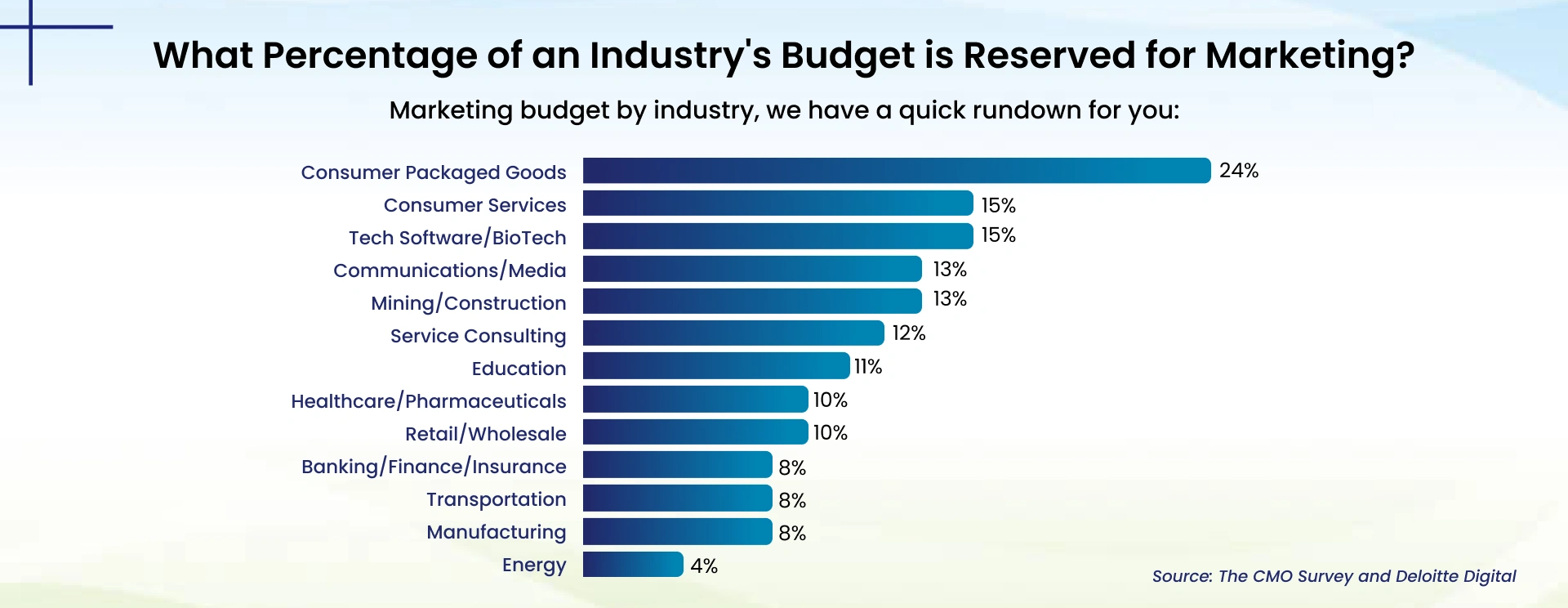
Nevertheless, we have some marketing techniques to stay ahead of the curve in your industry that we will now discuss.
Since you’ll be running your business online, you'll depend on e-commerce and online customer experience in some form to move forward. That’s why we have compiled crucial insights relevant to your industry. Have a look:
1. Retail: E-commerce currently accounts for about one-fifth of all retail sales worldwide, and this share is expected to grow to 22.6% by 2027. If you’re not offering your products or services online, you could miss out on opportunities to grow sales.
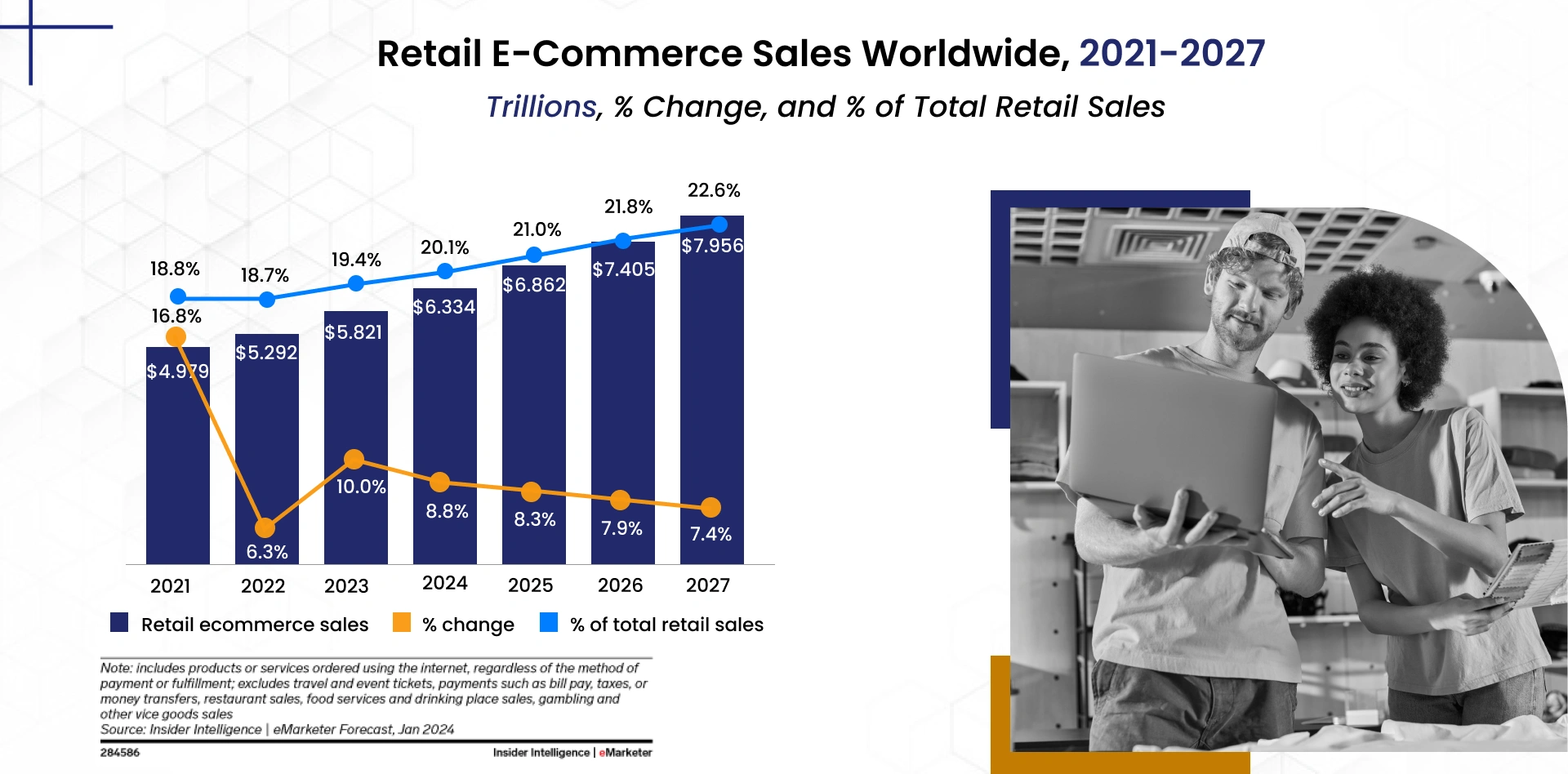
2. Food & Restaurant: Did you know that consumer spending in the industry has been rising steadily by around 2.6% since 2014?
3. Health, Beauty, Fitness, and Wellness: Health and beauty markets are projected to grow to $4.32 trillion and $14.8 billion by 2026. If you work in these industries and are not making bold strides already, now is the time.
4. Residential & Commercial Services: You operate in one of the US's most resilient and steadily growing industries. That’s because despite the 2019 pandemic blow, the sector grew to 1.14% between 2019 until 2020.
5. Artificial intelligence is your best friend for life. The U.S. Chamber’s Empowering Small Business report highlights the essential role of various technology platforms in helping small businesses navigate workforce shortages and inflation. Additionally, small businesses that adopt technology tend to outperform their competitors and exhibit greater optimism about the future.
Still not satisfied with our insightful findings? We agree that our competitor and industry analysis highlights might be relevant, but not for your unique business. This is why we encourage you to take the time to go through the US Small Business Administration’s free resource on “Market research and competitive analysis” for a deeper understanding of your business landscape.
Ever tried parenting cats? That’s what marketing feels like without clear goals—chaotic and mildly frustrating. Defining your small business’s marketing goals isn’t just about setting targets; it’s about crafting a roadmap so uniquely clear that your buyers can’t help but support your growth.
But more than “How to set the right goals for your small business,” you might be better off knowing “How NOT to set goals for your business.” Why? Because the 'error' in 'trial and error' doesn’t have to be yours—learn from those who’ve been there before and turn their missteps into your shortcut to success.

Wrong: "I want more customers."
Right: "I’ll increase sales by 20% in Q3 by running two email campaigns monthly and optimizing my Google Ads."
Reason: "More" isn’t a strategy—it’s a wish. If you can’t track it, you can’t improve it.
Tip: Use SMART goals (Specific, Measurable, Achievable, Relevant, Time-bound).
Wrong: “Improve brand awareness.”
Right: “Gain 500 new Instagram followers in 6 weeks.”
Reason: You can’t track or optimize your progress if it's not measurable.
Tip: Use clear metrics, such as numbers, percentages, or engagement rates.
Wrong: “Start an email marketing campaign.”
Right: “Launch first email campaign by May 15th.”
Reason: Without a time frame, tasks can get delayed or deprioritized.
Tip: Always attach a realistic deadline to create urgency and structure.
Wrong: “Double my revenue in 1 month.”
Right: “Increase revenue by 10% per quarter.”
Reason: Overly ambitious goals can overwhelm and demotivate you.
Tip: Break big goals into smaller, achievable steps that build confidence.
Wrong: “Get 10,000 TikTok followers” (when your target customers aren’t even on TikTok).
Right: “Grow LinkedIn engagement by 25% to reach B2B clients.”
Reason: A goal that doesn’t support your core business direction is wasted effort.
Tip: Align your social media marketing goals with your target audience, brand, and overall strategy.
Wrong: “If I hit 10,000 followers, my revenue will automatically increase.”
Right: “Use 10,000 followers to drive 500 website visits/month and convert 5% into paying customers.”
Reason: Hitting a digital marketing goal (like followers or views) doesn’t guarantee income unless it’s part of a strategy that leads to conversions.
Tip: Connect your goals to a clear sales funnel—track how each achievement supports leads, conversions, and customer value.
Wrong: “Sell the same amount as last year.”
Right: “Expand into one new market and increase sales by 20% year-over-year.”
Reason: Playing it safe can keep you stagnant in a fast-moving market.
Tip: Balance realism with ambition—think bigger, innovate, and explore new opportunities that align with your capacity and vision.
Wrong: “We need to post daily on Instagram, TikTok, LinkedIn, Twitter, Facebook, and Pinterest!”
Right: “Focus on 1–2 platforms where our audience is most active.”
Reason: Spreading thin leads to burnout and inconsistent quality.
Tip: Go deep, not wide. Master the platforms that matter most to your audience.
Let’s face it—setting goals is easy. Setting smart, strategic, non-delusional goals? That’s where the magic (and money) is! Too often, small businesses chase follower counts like a popularity contest and confuse “being busy” with “making progress.” Spoiler alert: not the same thing.
If your goal isn’t clear, measurable, and leading somewhere that smells like actual revenue… It’s just a hopeful wish wearing a business suit.
Your business is like a unique, ever-evolving story; understanding where you are in that narrative is key to knowing what happens next. Are you still sketching out ideas on napkins and dreaming big, or are you actively juggling customers, orders, and marketing campaigns? If you're still unsure, Harvard Business Review’s timeless resource on the different growth stages of a small business, which remains relevant even today, can help you identify yours.
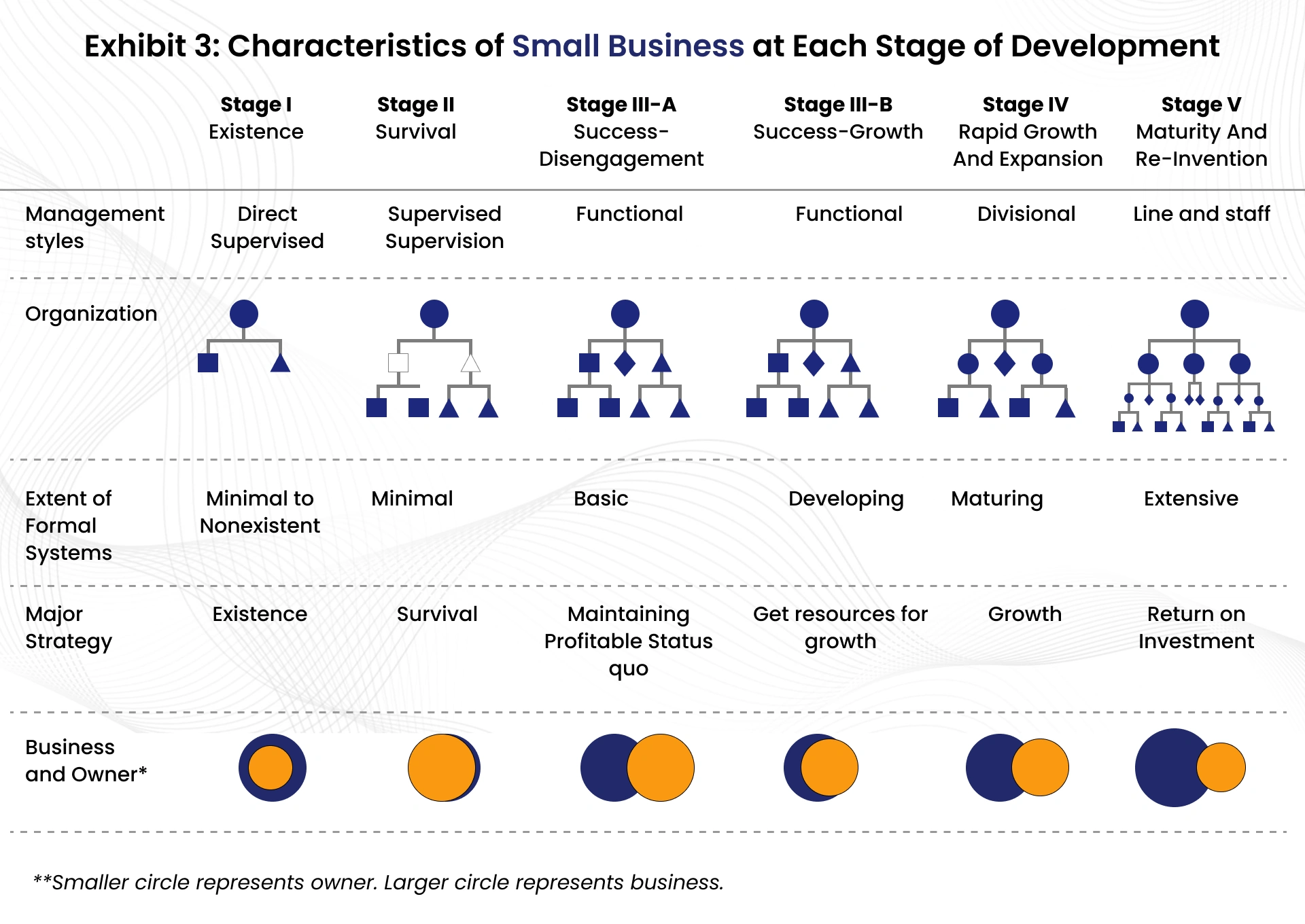
To summarize, the different growth stages of a small business can be categorized as follows:
1. Existence Stage: If your business has just started, it is in the existence stage. At this point, it focuses on survival by proving the worth of its idea, product, or service and acquiring its first customers. The main challenges are establishing a customer base and managing limited resources. Success requires strong customer relationship management (CRM) and a deep understanding of market demands.
2. Survival Stage: If your business has found a market, it is in the survival stage. At this point, it must maintain steady operations through effective financial management, focusing on cash flow and customer retention. The key challenge is sustaining operations while managing limited revenue and costs. Successful businesses optimize pricing and customer service to ensure financial stability.
3. Success Stage: If your business has achieved stability with a steady customer base and a reliable cash flow, it has reached the success stage. You now need to decide whether to consolidate or expand your options. The focus shifts to strategic growth, using data-driven insights to guide decisions and improve operations.
a. Disengagement: In this substage, the company has achieved solid economic stability, with consistent profitability and strong market presence. It can remain in this stage for a long time unless external changes or poor management disrupt its success.
Key priorities include:
b. Growth: In this substage, the owner shifts focus from maintaining stability to actively pursuing growth, leveraging the company’s cash reserves and borrowing power to fund expansion, often taking significant financial risks.
Key priorities include:
4. Rapid Growth and Expansion Stage: If your business has scaled operations and expanded into new markets due to increasing demand, it is in the rapid growth and expansion stage. However, rapid growth can strain resources, leading to inefficiencies or decreased service quality. Practical management tools are essential for scaling operations while maintaining customer satisfaction.
5. Maturity and Re-invention Stage: If your business has reached a plateau with stable profits but growth has slowed due to market saturation, it is in the maturity and re-invention stage. Your business must adapt by innovating or diversifying its operations. Failure to do so risks stagnation. At this stage, you decide whether to reinvest for further growth or prepare for an exit.
Understanding your business's needs and using the right tools to manage customer relationships and operations are crucial for success in each stage. We have compiled a handy list of all the tools that you might require for your assessment:
Tools for Assessment:
Your target market is the broad group most likely to need or want your product or service. Think of it as the ocean where your ideal customers swim. For example, if you sell organic dog food, your target market might be “pet owners who prioritize health and wellness.”
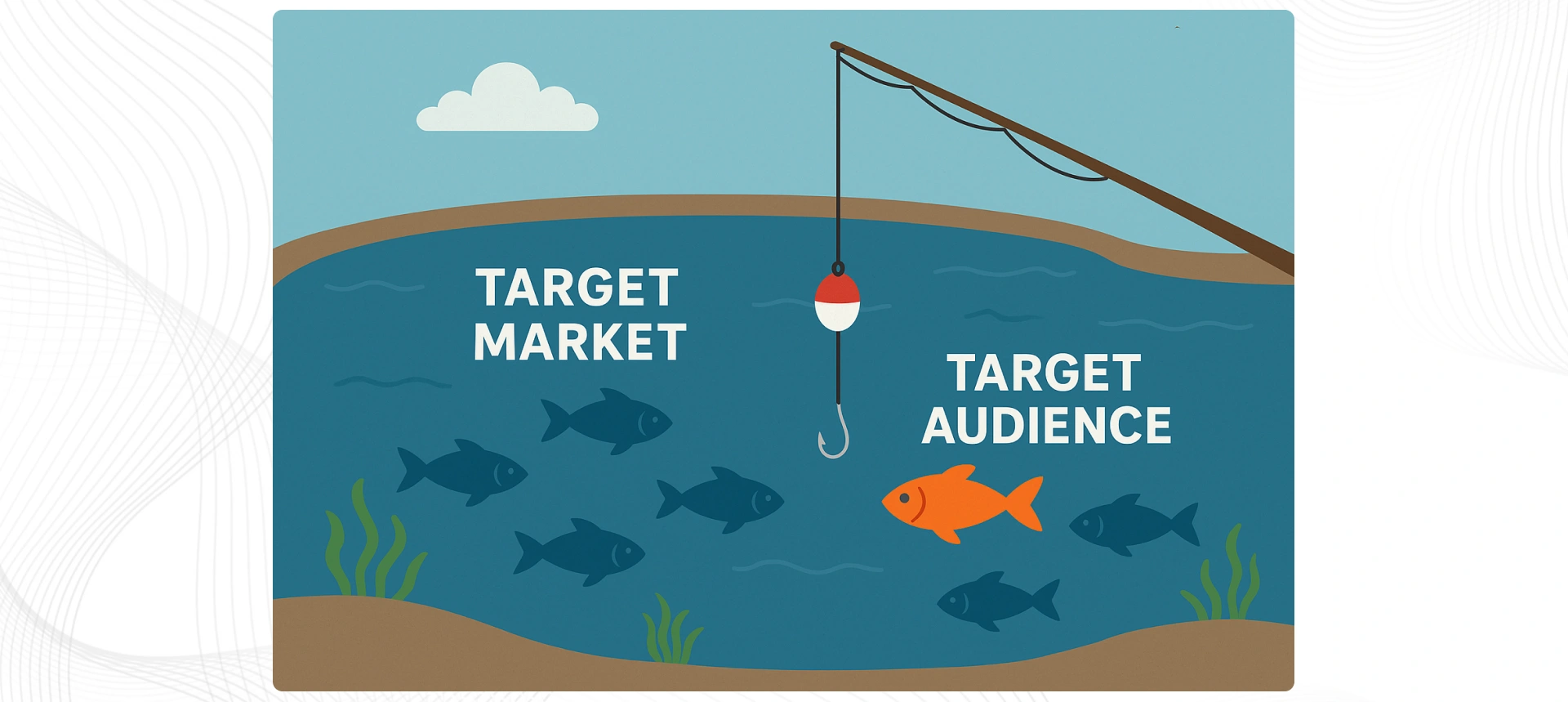
Your target audience, on the other hand, is a specific segment within that market that you’re focusing on. It’s like zooming in on a school of fish within that ocean. Using the same example, your target audience could be “millennial pet owners in urban areas who shop at specialty pet stores.”
Here’s a definitive checklist that you can use right away to narrow down your target audience for your pre-defined marketing goals:
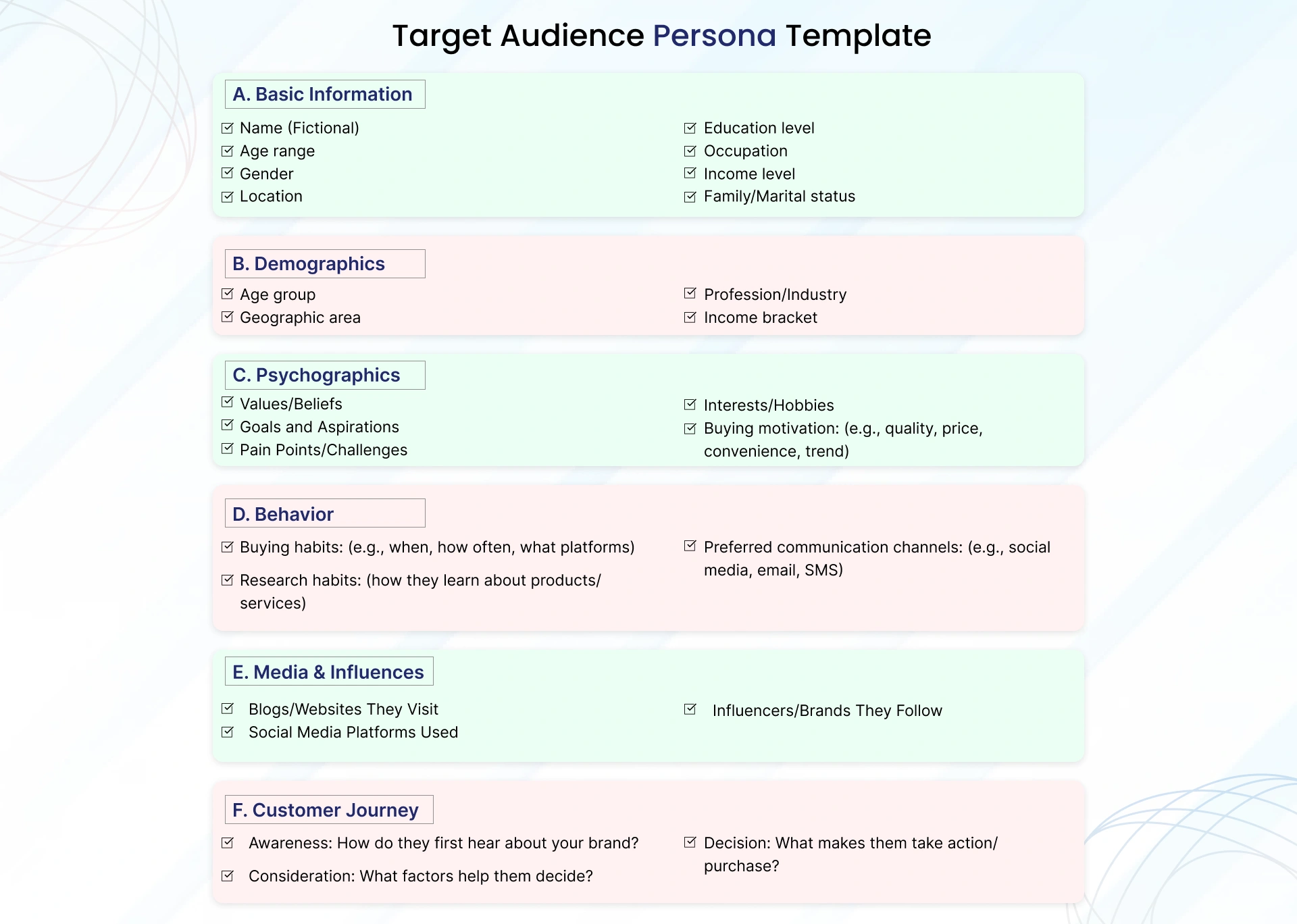
Running a small business is like juggling flaming torches while riding a unicycle—exciting, but one wrong move and things get real messy. From design costs to software subscriptions, from printing flyers to hiring influencers, every penny counts. And let’s not forget the hidden costs—like the time you spend managing campaigns or the coffee you need to stay awake while doing it. We have prepared these major budget buckets for you to categorize your costs into:
Before your cash register sings its first melodious "ka-ching," your marketing budget might make your wallet wince. Upfront marketing investments—those necessary expenditures that precede revenue—are the financial equivalent of planting seeds before harvest. Consider these essential early outlays that separate thriving businesses from those that fade into commercial obscurity:
Marketing isn’t a one-and-done launch—it’s a lifestyle. Ongoing costs, such as ad spend, content creation, email tools, and social media management, keep your business in the spotlight, not lost in the scroll. Think of it as your brand’s gym membership: skip it, and things start to go flabby. Invest, and you stay sharp, visible, and unforgettable. Whether it’s memes, newsletters, or SEO magic, these costs build momentum. Sure, it’s not always glamorous—but neither is greatness without consistency. Budget for it, commit to it, and watch your brand glow up like it just got a fresh logo and a standing ovation.
If you run a retail brick-and-mortar store that you plan to market online, you must consider the geographical and financial costs associated with your location. Your business location isn't just an address—it's a financial commitment with zip code-specific price tags:

Keeping tabs on costs is like financial yoga: it keeps you flexible and aware. Are your ads crushing it, or are they more of a garage band? Adjusting regularly is your superpower—it’s how you catch flaws early and pivot. So, grab your spreadsheet and turn your budget into a living, breathing document that evolves with your business.
Why spend your precious time reinventing the wheel when you can repurpose your existing gems? It's like giving your content a snazzy makeover while sipping your morning coffee – effortless and oh-so-stylish!
Picture this: Your old blog post, once forgotten in the depths of your website, now gleaming with new images, updated information, and a sprinkle of SEO magic. You know how you can make it even better? Converting it into video content for YouTube, Instagram, TikTok, or LinkedIn for increased engagement. It's like Cinderella going to the ball, but better – she's bringing in more customers to your business!
But how much do marketers spend on repurposing content? Referral Rock, which helps B2B and B2C businesses scale customer growth through referrals, found that 46% of marketers say repurposing content “brought in the best results (leads, conversions, and so on).
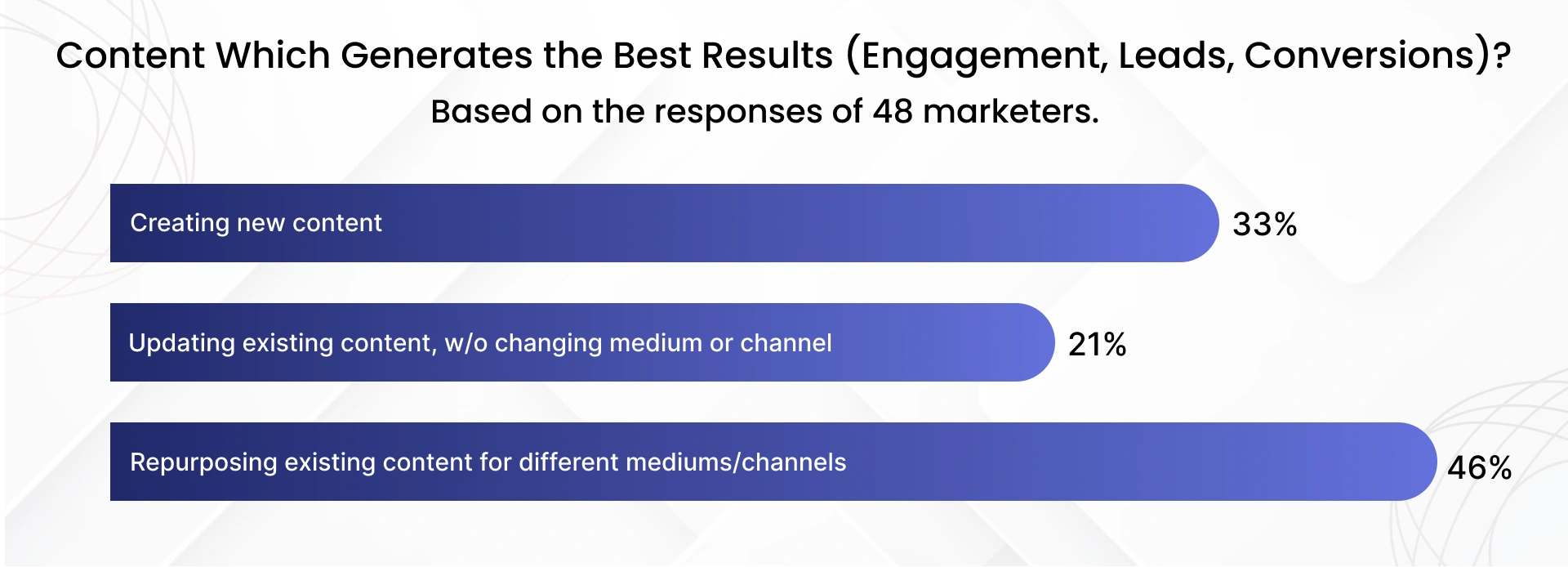
De-prioritizing doesn’t mean abandoning ship. It means being strategic. If your audience is bingeing content on Instagram but skipping LinkedIn, shift your energy where the action is. Pour your effort into platforms that drive traffic, engagement, and, most importantly, sales.
Automation: because you have better things to do than manually send every “thank you for your order” email at 11 p.m. From scheduling social media posts to sending welcome emails and reminding customers about abandoned carts, automation handles the repetitive tasks so you can focus on the big, brilliant ideas—like launching a new product or finally understanding what SEO means. It’s not cold or robotic; it’s efficient and loyal, like a digital assistant who never sleeps or drinks all the office coffee.
Okay, let’s cut to the chase: all the costs involved in different components of your marketing strategy might seem overwhelming. What’s the best strategy for you at this point? Should you outsource your marketing to an agency, a freelancer, or do it all yourself? Let’s weigh each option.
Hiring an Agency is the marketing equivalent of hiring a personal trainer for your brand—they’re experts who whip your strategy into shape, deliver results, and make it look effortless. Sure, it’s an investment, but you’re paying for a team of pros who live and breathe this stuff. It’s the best option for your small business’s marketing that money can buy.
Marketing From A Freelancer? That’s like hiring a personal chef who only knows how to cook one dish—sure, it’s better than nothing, but you’re missing out on the full menu of expertise, consistency, and scalability your brand needs. DIY Marketing? That’s you attempting a marathon with no training—bold, but likely to end in a faceplant. Agencies bring the expertise, creativity, and polish without the overhead of salaries or the risk of amateur mistakes. So, unless you’re into stress and subpar outcomes, hire the pros. Your brand deserves the gold medal treatment.
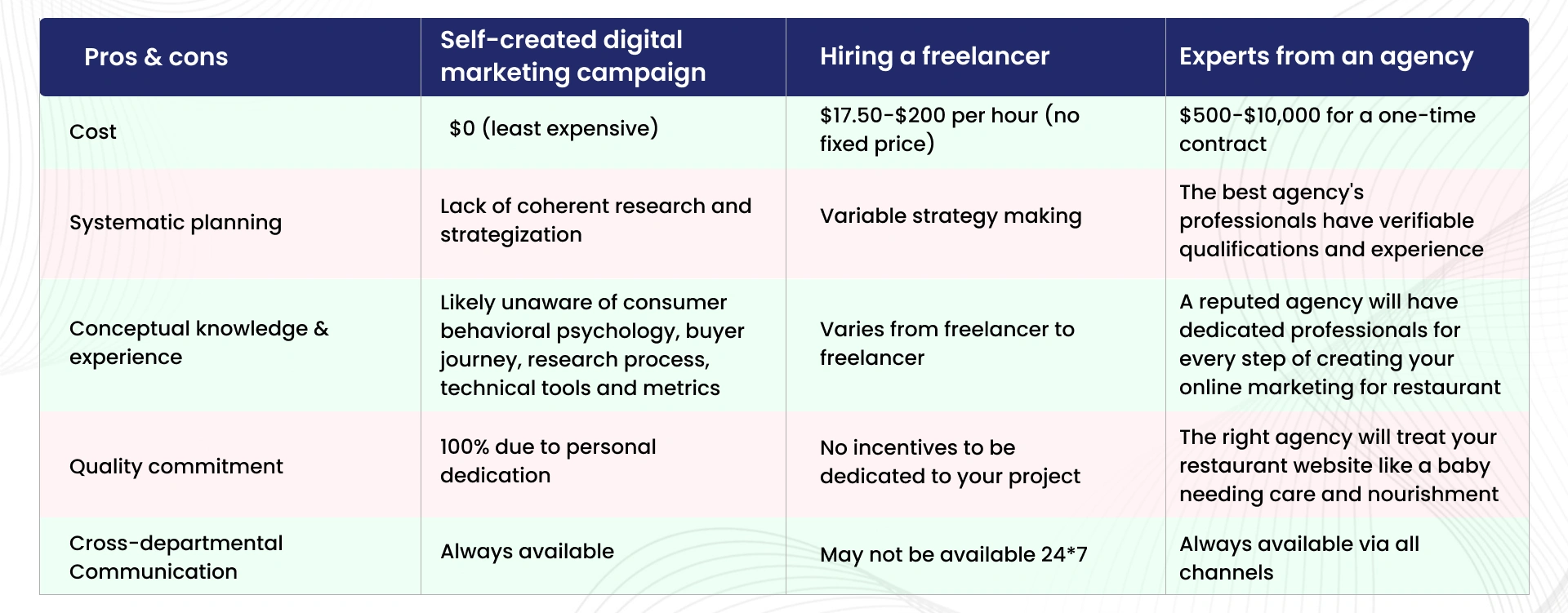
Alright, let’s get down to business and talk about real money. You should have identified which industry you belong to, what stage of growth you're in, and what goals you want to achieve with your marketing plans by now. It’s time to open up a spreadsheet or grab a napkin and a pencil–whichever you prefer–to start crunching some numbers. Follow through on our suggestions to estimate how much of your budget you should ideally allocate to different growth areas, and adjust accordingly:
Marketing your small business online, even if you have a retail brick-and-mortar store, will imply that your website and social media’s growth will largely be driven by content quality. You could handle it all by yourself. However, the hidden costs of managing time with consistent delivery will eventually weigh on your limited resources. The better alternative? Allocate a specialized budget for content marketing to empower a team of experts to grow your business online effectively. That way, you wouldn’t have to individually purchase every tool and software used by experts in content marketing. Big shot success at a fraction of the price!
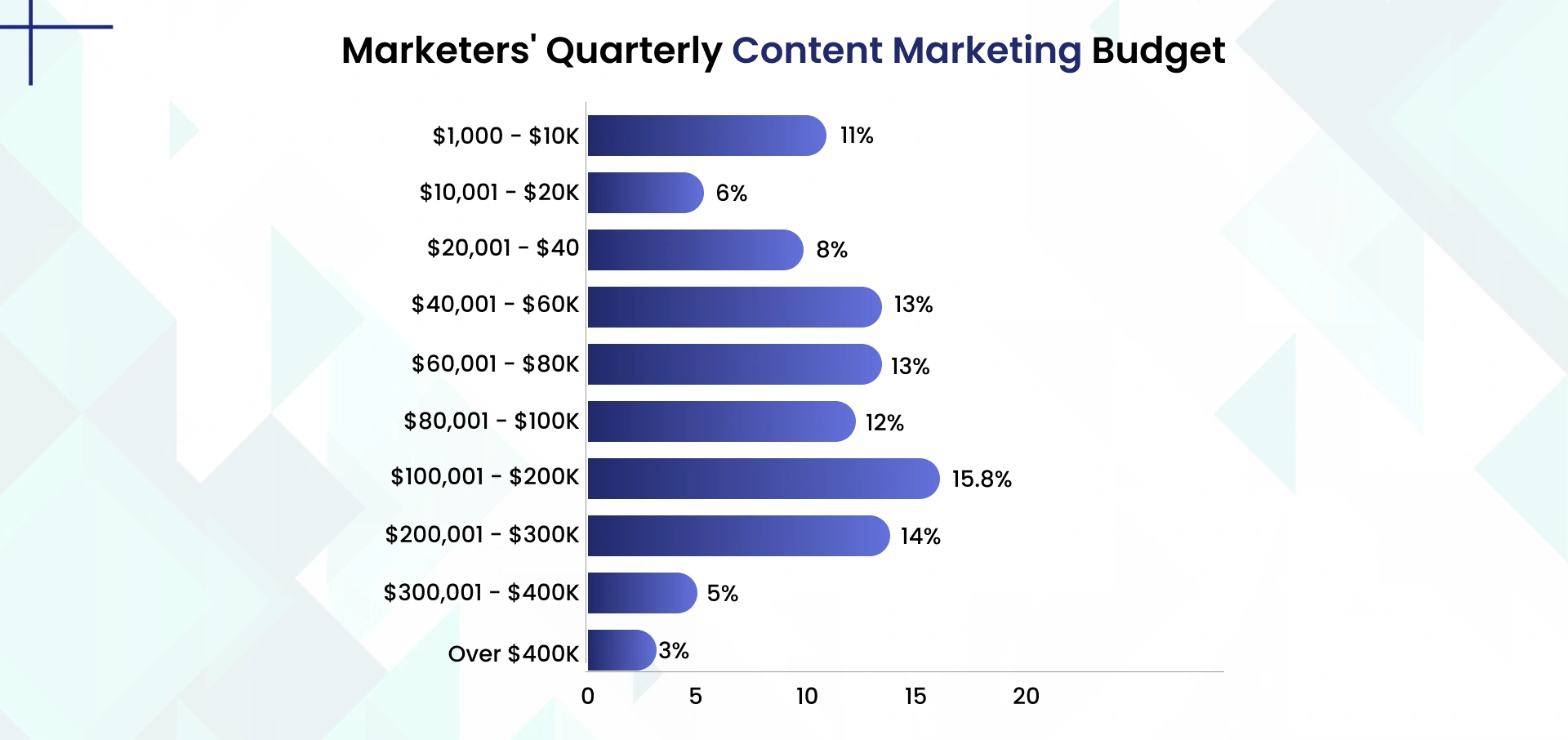
Others are spending more than you on content marketing, per a HubSpot survey. The big guys already recognize the importance of good content; it’s your turn to do the same.
According to the Small Business Administration (SBA), businesses on average spend about 1.08% of their revenue on advertising, with variations by industry. Moreover, business-to-consumer (B2C) companies usually allocate more:
For paid ads, you can expect to spend on:
The price of branding differs based on factors such as complexity, scope, and the designer's level of experience. It typically spans from $5,000 to more than $30,000. Engaging a junior designer may cost between $450 and $30,000 if you opt for a well-known agency.
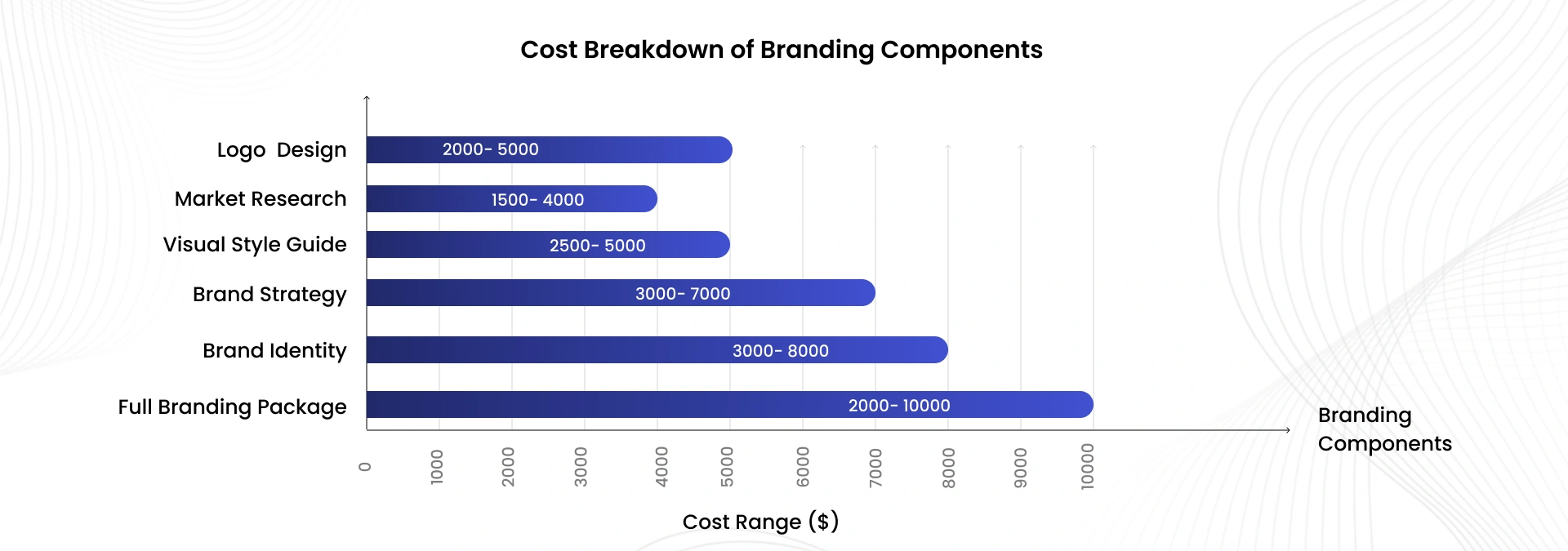
Building a strong multi-channel presence is essential for maximizing audience reach and engagement. PR specialists will collaborate with the marketing team to monitor the evolving social media landscape and boost engagement and credibility. Partnering with influencers helps adapt to trends and meet budget goals. According to Influencer Marketing Hub, businesses earn an average of $5.20 for every $1 spent on influencer marketing. Moreover, as more PR tools integrate artificial intelligence (AI) features, it is essential to embrace them to boost your daily workflow.
For a small company, the annual budget for data analytics can range from a few hundred to several thousand dollars, depending on the tools and resources used. Elements such as the intricacy of the data, the number of users needing access, and whether analysts are employed internally or services are contracted out will impact the exact budget.
When considering hiring, it's a good idea to explore different options and use outside resources to get a clear picture of the costs associated with bringing someone new on board. It’s not just about their salary—be sure to factor in benefits and other overhead costs as well. And for older employees, don’t forget that benefits, gratuity, and performance bonuses can add up and impact your payroll budget.
Marketing is like the secret sauce of business success, but figuring out how much to spend on it can feel like solving a Rubik’s Cube blindfolded. Digital marketing cost for small businesses is not just about dollars—it’s about impact. Are you aiming to be the local hero or the global superstar? Knowing how much other small businesses at a similar growth stage spend on average can give you a rough ballpark figure to work with.
The marketing budget for a startup should be around 15-20% of the annual revenue. Your early marketing efforts must be more aggressive since you’re unlikely to have any brand recognition as a startup. Once you’ve built enough momentum for your product and brand, you can always lower the marketing budget to accommodate other growth opportunities.
According to Entrepreneur, businesses that have been in operation for less than 5 years should spend 12-20% of their projected revenue on marketing. This bold investment helps them gain traction, build brand awareness, and carve out a competitive edge. Think of it as the marketing fuel to launch your business into orbit!
For B2C companies that have been in business for more than five years and have established market share or brand equity, we recommend allocating 6-12% of your gross or projected revenue to marketing. B2B companies, on the other hand, can spend 2-5% of their revenue on marketing.
In the wild west of corporate marketing, a comparative analysis of marketing spend reveals a circus of strategies. Some companies go all-in, while others hedge their bets like a cautious gambler. Such analysis reveals a fascinating spectrum: from high rollers dropping millions on glossy campaigns to frugal strategists squeezing every penny for maximum ROI. Take a look:
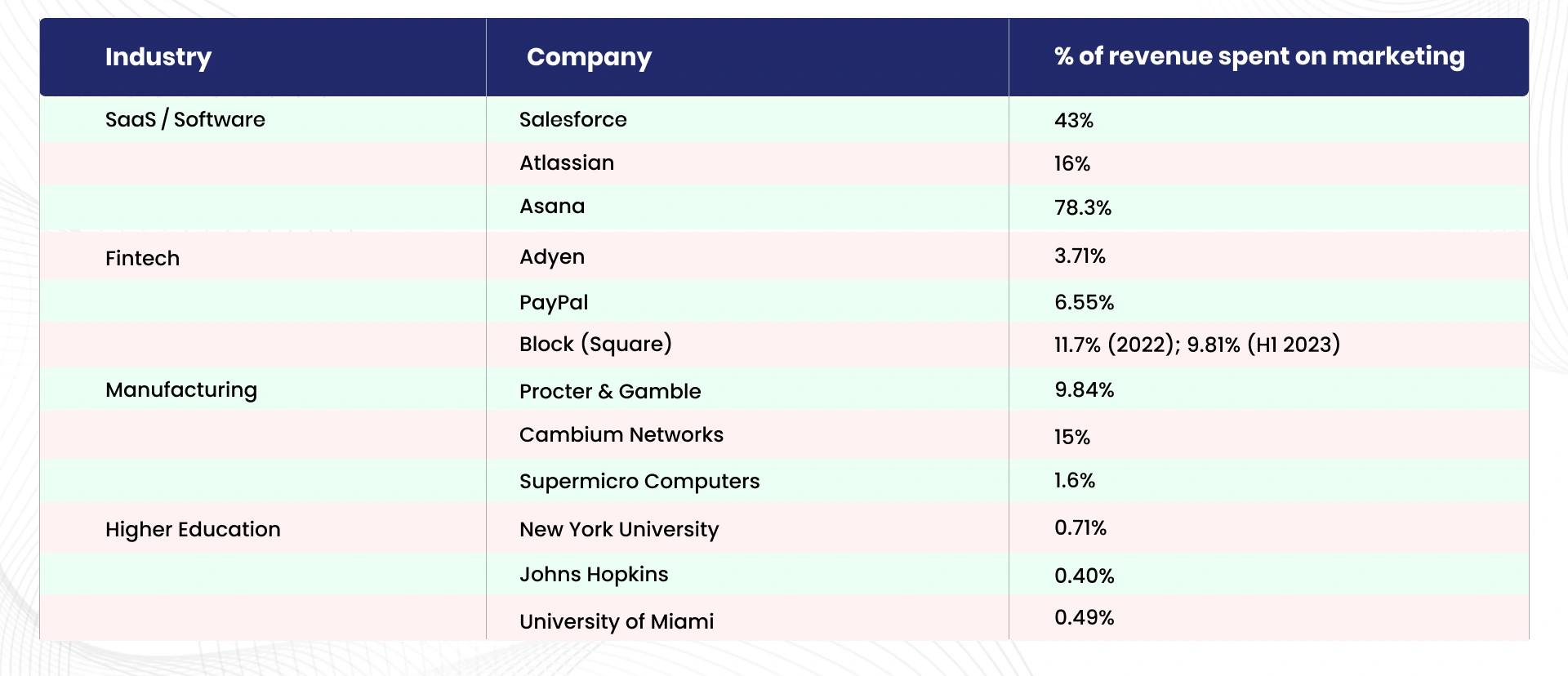
Imagine opening a bakery but telling no one, just waiting for customers to sniff out your croissants like bloodhounds magically. Spoiler: They won’t. That’s where marketing swoops in like a superhero with a megaphone, shouting, “Hey world, this small business exists, and it’s AMAZING!”
Even if your product is life-changing, people won’t line up if they don’t know it exists. Marketing turns whispers into roars, strangers into fans, and “Who’s that?” into “Take my money!” So, if you’re running a small business without marketing, you’re hiding your light under a bushel.
But here’s the good news: you don’t need a Fortune 500 budget to make a splash. At JanBask Digital Design, we specialize in helping small businesses with tight budgets achieve big growth. Our all-in-one solutions—from sleek design and seamless development to SEO strategies and compelling content—are tailored to turn your ‘Who?’ into ‘Wow!’ without breaking the bank. Call today to feel the difference from other agencies that promise the moon but deliver flak.
Learn How Small Businesses Balance Budget and Brilliance!

Leave a Reply